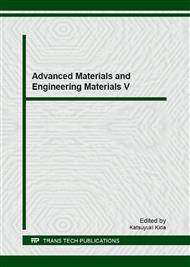p.371
p.376
p.380
p.386
p.396
p.400
p.406
p.411
p.416
Study of Migration Regularity and Controlling Factors of Subgrade Moisture under Atmosphere Action
Abstract:
In the influence of the atmosphere,the soil of the subgrade would frequently in continuous humidification and dehumidifying situation, and it will result in large variation of the engineering properties of the subgrade. So, it is important to study the water migration in subgrade under the influence of the climate. In this paper, based on moisture and heat coupling thermal, non isothermal equation of unsaturated soil are introduced, the subgrade evaporation model are established. The theoretical analysis and numerical calculation of the subgrade moisture changes and its influence factors under the effect of the atmosphere are studied. The study results show that: solar intensity are the most important factors to the subgade moisture, the solar radiation makes the temperature of the pavement rising, the evaporation of the pavement would be speed up. In the wet and dry cycle process, as the rainfall intensity is small, it has little effect to the subgrade moisture, in the same rainfall duration conditions, although the evaporation duration is the same, the subgrade moisture still changes with the rainfall intensity, the larger the rainfall, the more changes of the subgrade moisture. Little intensity and long duration rainfall pattern affect the subgrade moisture more intensity than that of large intensity and short duration rainfall pattern.
Info:
Periodical:
Pages:
416-419
Citation:
Online since:
August 2016
Authors:
Price:
Сopyright:
© 2016 Trans Tech Publications Ltd. All Rights Reserved
Share:
Citation:


